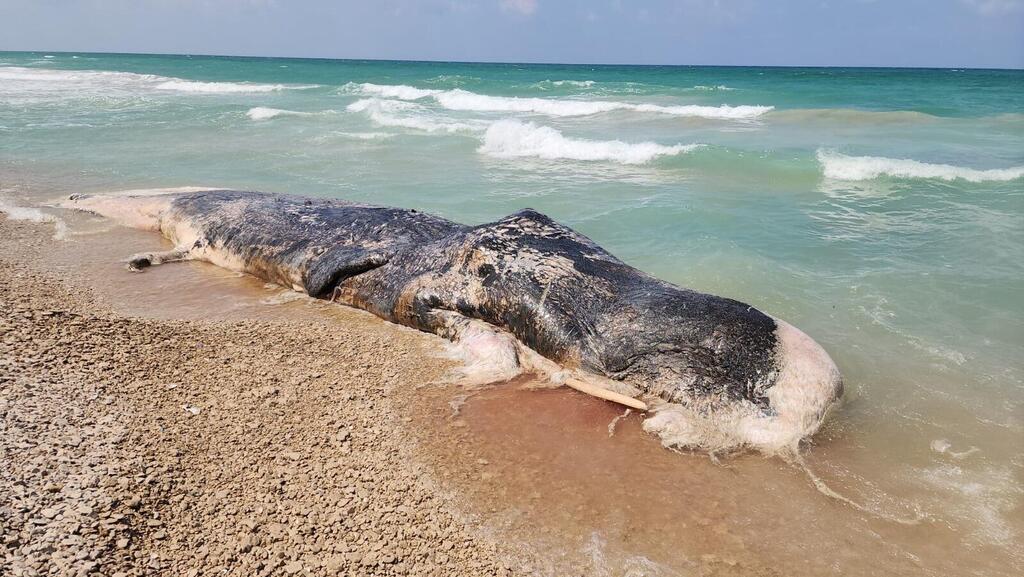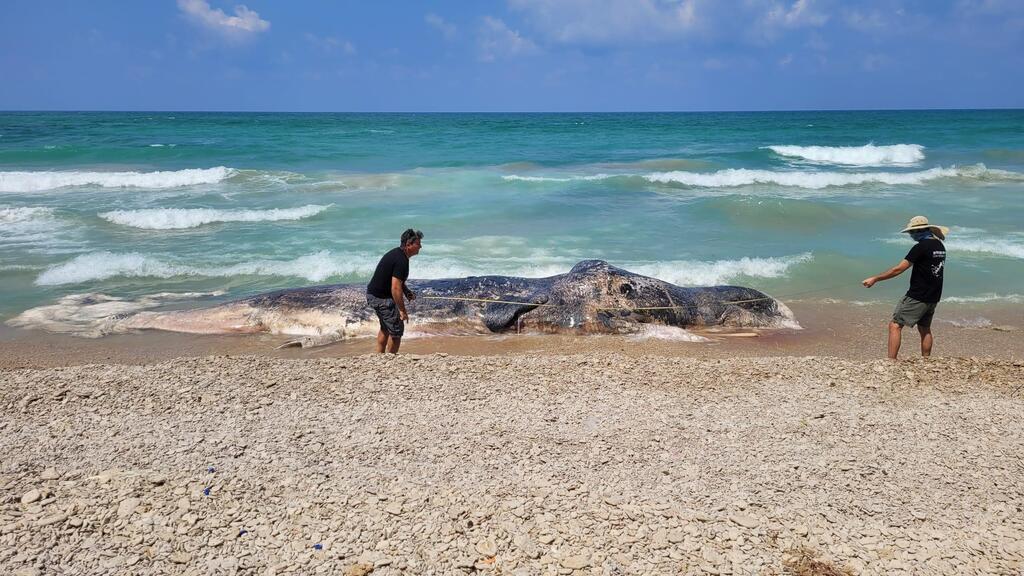Getting your Trinity Audio player ready...
Researchers at Dolphis, an NGO working for the protection of marine life in Israel, were concerned when it was discovered that three sperm whales were found dead on shores in the Middle East in one week, about 130 km apart from one another.
More stories:
On August 28 the carcass of a male sperm whale, measuring 12 meters long, washed up on a beach in Israel. A day later, the carcass of another sperm whale was found north of the city of Tyre in Lebanon. According to Lebanese researchers, the whale measured 14 meters in length. On the following Sunday, another carcass was washed ashore, this time of a male sperm whale found south of Tyre.
Researchers at Delphis have noted an interesting change in the presence of sperm whales - a deep-sea endangered species in the Mediterranean Sea - in Israel's exclusive economic zone. They said that at least two out of the three dead sperm whales were males. According to Dr. Aviad Scheinin, a chief scientist at Haifa University's Maurice Khan Marine Biological Research Station, sperm whales usually travel in groups of young males.
"It seems that a traumatic event impacted the group of male whales, and each of the three ended up on a different shore. It's possible that this resulted from seismic activity or some underwater explosion. We're currently trying to clarify this with the relevant authorities in Israel and the region," Scheinin said.
Dr. Mia Elasar from Delphis said that up to 2020, sperm whale sightings in Israeli waters were relatively rare, with only four dead sperm whales washing up on Israel's shores. She added that between 2021 and 2023 the same number of whales were found dead on different Israeli beaches.
"In the span of about two years, the same number of dead sperm whales washed ashore as in the 20 years that preceded them. The positive aspect of these numbers is that the number of dead is in line with the number of living whales observed during these years, indicating an increase in the species' population," Dr. Elasar explained.
"Three dead sperm whales were found in a relatively short stretch of coast (about 130 kilometers in length), between Tyre in Lebanon and an Israeli beach. Finding this many specimens over such a short period of time, should make us concerned and push us to understand what the cirbumstaces are behind this unusual occurrence ."



